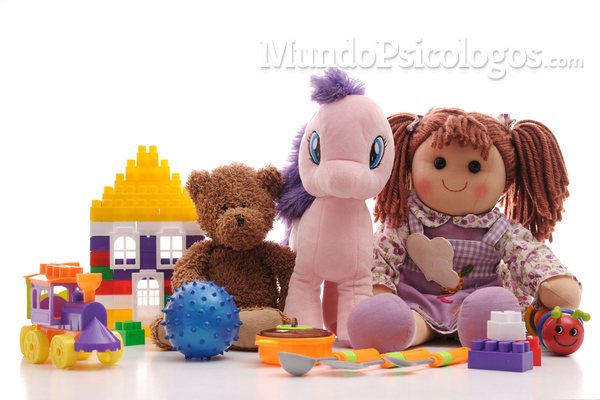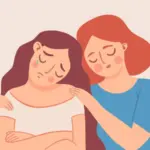Stereotypes pigeonhole us, but when it comes to gender stereotypes they cause a gap that is difficult to manage. Today I’m talking to you about gender stereotypes and how they affect us.

Today I am going to talk to you about the gender stereotypes those preconceived ideas that generate differences between boys and girls and later between men and women, ending up causing a gap between both sexes and a differentiation that originally was not such.
When we are born we are practically the same, only our genitals differentiate us, but adults are in charge of managing those differences that cannot be seen at a glance: girls have holes made in their ears to put earrings in them and they are dressed in pink, while children are dressed in blue. From the first day of life we have been marked with a gender stereotype: the color of our clothes.
In fact, you will see few families buying blue clothes for girls and pink clothes for boys, unless there was some error in the ultrasounds. And if there are doubts, opt for neutral colors such as beige or gray. Of course, all babies are dressed in pastel tones, since they are considered more delicate colors.
Nevertheless, It wasn’t always the same Initially, babies were dressed in white, a color associated with purity, and it was not until the First World War that this concept was changed. But far from what we have today, the color pink was associated with boys (a color similar to red, which is linked to strength and blood) while girls were dressed in blue (a color associated with calm). and delicacy). It was after World War II that the colors changed, since the marines dressed in blue and that is why the color blue was associated with children (who when they grew up were dressed as sailors, relating it to strength).
Be that as it may, the point is that babies are currently differentiated with the color of their clothes, the wall of the room and even the car in which they ride.
Later, as children grow, these stereotypes increase and differences appear with toys and even with hobbies. Not only are the packaging for girls’ toys pink and boys’ toys blue, but boys often play with war dolls or cars while girls have kitchens or baby dolls that need to be fed and changed. honeycomb. If a child decides to play with a doll, parents will probably engage in “brain cleaning” to convince their child that boy dolls are better and will experience their child’s choice as a problem. Thus, girls grow up with the concept that they have to care and be beautiful while boys grow up with the idea that they have to be strong and never show emotions. Furthermore, it is acceptable for girls to dance, sing and play moms and dads while boys have to play team sports like soccer.
Therefore, these differences in hobbies, toys and colors It’s not something that goes with the genes or the X or Y chromosomes, but is being imposed in society until it is established in our way of being like a tattoo, for life and generation after generation. Little by little, boys are rejecting dolls and girls are rejecting dolls, not by nature, but because “it is what it has to be” and things for boys and things for girls are established as something differentiated and that cannot be the same. another way. If, for example, a teenage boy decides to go to class with his nails painted, he will be labeled gay and ridiculed for it until he gets the idea of going to class with his nails painted again out of his head. On the contrary, if a teenage girl dares to dress masculine and play soccer, she will be labeled a “tomboy” and ridiculed until she feels like a weirdo.
Below I present two links; the first is about the difference between toys and how a girl, Riley, is outraged and is able to consider how absurd it is that girls cannot choose to play with superheroes or boys with princesses, while the second advertisement is about of a campaign to raise awareness of the stereotype of running like a girl, hitting like a girl or hitting like a girl.
Both videos make you think about damage caused by society and the absurd differentiation that we are generating among all with respect to gender.
What are the consequences in adult life?
- Make the difference bigger between men and women. I repeat, we are not so different from each other, we take care of making ourselves different. If we grow up with stereotypical ideas, a woman will always be the “weaker sex” while a man will have to be the “macho” who cannot cry or show weakness.
- Machismo is favored. Society is full of micro-machismos that we are often almost unaware of. With gender differences we encourage these sexist behaviors and ideas to persist.
- Impedes freedom of expression of men and women. Men should think and act in a certain way and women should think and act in a certain way. Thus, going outside the norm is something that generates shame and a sense of ridicule as well as poor social acceptance.
- It limits people and pigeonholes them into certain social functions For example: the woman has a maternity leave of 4 months while the man has a maternity leave of one month (previously it was a few days). This difference forces the woman to dedicate more to the children, while the stereotype remains that the man is the one who must bring the money to the home and therefore, it will be more difficult for a woman to apply for positions of responsibility. since the bosses consider that there will come a time in life when the woman will fail because she will be a mother while the man will not.
- It contributes to promoting cases of gender violence If men continue to consider themselves above women, it is easy for them to exercise control and if women continue to think that they must be protected and cared for by men, it is easier for men to exercise that power and for there to be a difference in hierarchy, when Relationships should be equal.
As you can see, the consequences for adult life are negative for both sexes. Let’s try to break that gap and let’s educate from equality so that in adult life there are no such gender differences.
Encarni Muñoz Silva
Health psychologist, registered number 16918








